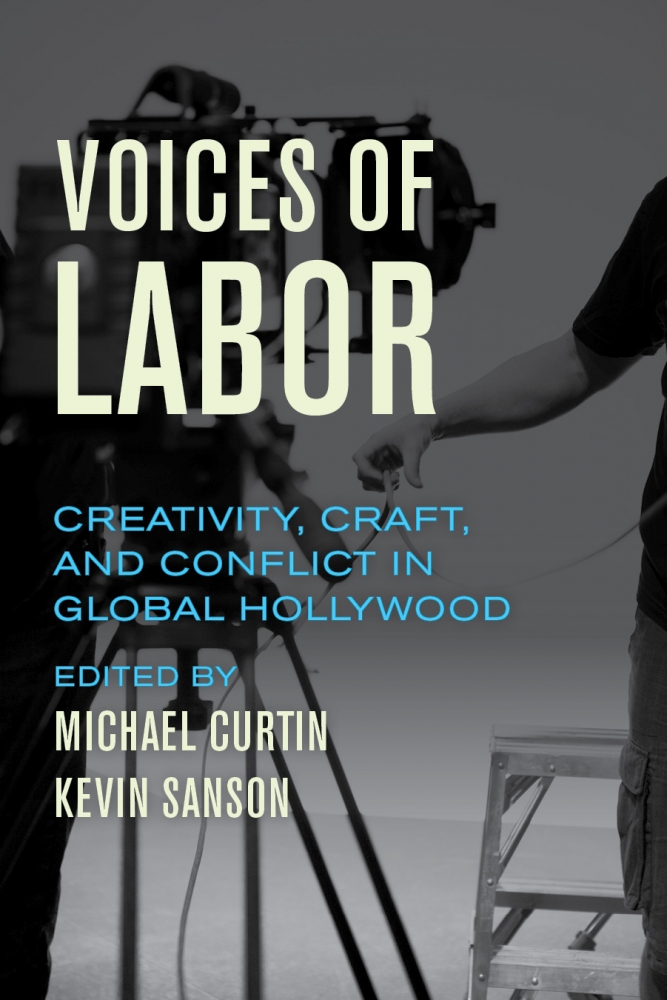
‘Mobile Hollywood’

Picture a Hollywood movie set. What do you see? Probably a soundstage with all the trimmings: giant klieg lights, expensive cameras and hundreds of people — all the components of the perfect manufactured setting.
And, more increasingly, it’s a complete myth. Take the recent superhero film "Logan," which features the Marvel Comics character Wolverine. Set in a post-apocalyptic future with locations as diverse as Oklahoma and the Mexican border, the film actually was shot primarily in Louisiana, due in large part to the tax incentives offered by the state.
As moviemaking becomes a more global enterprise, sets today can be constructed anywhere (often more cheaply than in California). Moving a film’s location to Atlanta, Toronto — or even China — is a phenomenon known as “runaway production,” and it’s affecting the industry as a whole.
UC Santa Barbara’s Michael Curtin, the Mellichamp Chair of Global Studies and a professor of film and media studies, examines the effects of this practice and the increasingly global Hollywood labor market in his new book, “Voices of Labor: Creativity, Craft, and Conflict in Global Hollywood” (UC Press, 2017).
Curtin, along with his co-editor Kevin Sanson (Queensland University of Technology), spent two years talking to Hollywood craftspeople about their concerns with the changing industry and the ways that globalization has affected their jobs. The book features more than 20 in-depth interviews with the creative masterminds behind the movie magic, including makeup artists, location managers and visual effects supervisors.
Though it represents a broad range of job titles, a few common themes emerge in the book. One is that many in the industry feel anxiety about having to move themselves, and possibly their families, across the globe for a job. Even worse, they often push themselves to the point of exhaustion to try and make a smaller crew or smaller budget feasible.
“These are people who give quite a bit to their work,” said Curtin. “The passion for craft is something that is a major theme of the book. But because they love what they do, they are willing to go the extra mile to prove that they can do more with less. This makes them especially susceptible to exploitation.”
Curtin, who has worked as a producer in film and television and was recently elected to the board of the Society for Cinema and Media Studies, sees the issue as being inextricably linked to the global nature of modern production. Skilled craftspeople will move to where the jobs are, he said, even if it means making major sacrifices.
“These are socialized networks of people who can move to any part of the world, set up and produce movie magic,” explained Curtin. “That flexibility is part of what undermines their bargaining power. We’ve seen in research on labor that workers are most powerful as an organizing force to counter the demands of management when they are living and working in close proximity.”
Curtin describes the labor market in Hollywood as being made up of independent contractors — more than 90 percent of film crews are people who work for themselves or for small firms. As he explains it, this also weakens their ability to bargain. Even worse, because their training and expertise comes with a price, some runaway productions prefer to use local crews, leaving them out of jobs altogether.
“The mobility of Hollywood allows for outsourcing,” said Curtin. “It allows productions to go to places that offer better deals, and it undermines the people who are in Los Angeles, because there is always the threat that your job can move away. Even though there are very dense networks in L.A., there is nevertheless a lot less power in those unions than there was before.”
Curtin hopes that the book will open the eyes of some major players in Hollywood. Though “Voices of Labor” is a scholarly work, meant for students and researchers, it has lessons that apply to a wider industry audience. “I hope that in looking at these interviews, people in the industry can see the trainwreck that is happening,” he said. “As people do more with less, there is a limit. That limit will start to have an effect on creativity.”
To increase availability, Curtin and Sanson published the book through Luminos, the University of California Press’ new open access publishing program, making it easily obtainable by the general public and top-line Hollywood talent.
“There is a gulf between the investors and their film crews because their lives are so separated from everyday workers that they don’t see the downstream effects,” Curtin explained. “They don’t see the quiet resentments or the burnouts. That separation between the conception and management of production and the day-to-day work on a set is a huge gulf, and there’s a lot of frustration around it. “
One positive thing to come out of this crisis in Hollywood, according to Curtin, is that people are open to change. “I see a nascent grasping toward coming up with new ways to deal with these issues,” he said. “In this moment of crisis, people are looking for alternatives. Among workers, they’re starting to think less specifically about the phenomenon of mobile production as simply ‘runaway,’ and to think more about how labor organizations around the world can develop negotiating strategies that address the demands of mobility.”
Despite these setbacks, part of the traditional idea of moviemaking magic is still intact. Even if the movies aren’t always shot in Los Angeles, there are still talented people working together to realize a singular vision. “Despite all of the anxiety, people still love to do what they do,” commented Curtin. “In the book, we see that they see what they’re doing as creative and socialized. They are working very long hours and continue to turn out high quality product. It’s that enduring creativity and professionalism that makes the social relations of labor operate.”



